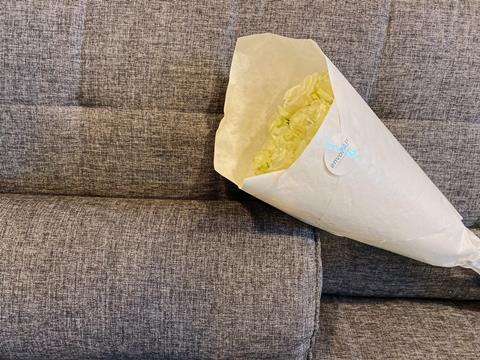
Victoria Hattersley spoke with Kaushal Shah, CEO and founder of envoPAP, a company that is creating value from agro-waste in a bid to offer a more sustainable alternative to traditional wood fibre-based paper.
envoPAP’s essential proposition is that using agro-waste in place of wood fibre to produce paper packaging can significantly reduce the packaging industry’s carbon footprint. But in doing so, it is also helping to reduce the global burden of waste by sourcing its feedstock from developing markets. A great example of the interconnectedness of our collective sustainability goals.
VH: Could we begin by talking a little about the background behind envoPAP itself?
KS: The company began six years ago at the University of Southampton. I had been to a couple of expos in Germany and what struck me was the huge demand for sustainable packaging in Europe. I had grown up in India and attended sugarcane harvests with my family so I had seen first-hand the waste this creates.
So I had twin goals: I wanted to use this waste to create products that could be used in everyday life and provide an alternative to plastics and wood fibre-based materials, while at the same time using my family expertise and networks to ease the agro-waste crisis in India.
We started with a focus on sugar cane [bagasse] because I grew up as a sugar cane farmer, where waste was typically not used but burned at the side of the fields. Next we started utilizing wheatgrass and this was followed in 2018 by rice waste. We mainly focus on applications for e-commerce, although we also offer solutions for the hot and cold food packaging sector, flower packaging, pharma and so on.
VH: Why do you believe envoPAP is superior to wood fibre-based paper in environmental terms?
KS: Our motivation is to maximize the amount of waste we can deploy. Of course there are a number of companies that use agro-waste and many that don’t, but we don’t consider ourselves to be in competition with these. In fact, our goal is to empower and inspire others to improve the sustainability of the supply chain by reducing their wood fibre consumption.
Also, the amount of agro-waste generated is getting larger and larger so if we can at the same time prevent this from being burned and instead utilize it that it something we really believe can make a difference.
We recently conducted an LCA to compare our print and packaging materials to wood and recycled fibre. We found that our materials generate 1.23 kilos of carbon compared to paper which is 1.71.So even when you factor in the transport of the feedstock from India, we are still more favourable.
VH: The aim of replacing all single-use plastics and wood-based paper with agro-waste materials is an ambitious one. Are there any challenges around sourcing agro-waste that will need to be overcome if this model is to become more widespread?
KS: Yes; it’s still a scalable product but we need to understand how much waste is generated – something like 15 million tonnes every year. Because we utilize the same machinery that is used for processing wood fibre materials: the process of pulping with envoPAP, for example, is pretty much the same.
Bear in mind: a lot of companies do want to replace plastic but how do you ensure the new materials can be integrated into the current infrastructure? NO company will invest huge amounts of money to make a material change. We believe that if we create a product that is a plug-and-play solution we can achieve scale relatively easily and help with the waste problem in India too.
VH: But is it realistic to say we can replace plastics entirely?
KS: It’s a material which can be replaced in many circumstances but it certainly has its advantages where required. Of course there are going to be areas where it is impossible but that’s where we have to be more careful to ensure that when it is being used it is recycled plastic.
In the paper and agro-fibre industry we are working on creating products that have coatings and strength barriers close to plastic. We are also now just beginning to offer papers with higher barrier properties which will broaden their applications. We achieve this by using our base materials and then applying a variety of coatings so not only are they recyclable but they also help protect perishable products, if this is needed. We’re not 100% there yet but we are making sure that these can be integrated into the current plastic manufacturing infrastructure so companies can use our materials without laying out huge costs.
I totally believe in plastics where absolutely necessary. There are new feedstocks emerging all the time – pineapple waste, for example – and we need to give these new materials a chance.

VH: I’d also like to talk about more general trends when it comes to sustainability in packaging. What challenges does the growth in e-commerce – speeded up, of course, by the COVID-19 pandemic – present for the packaging sector? Where is envoPAP’s role in this?
KS: We all know that, when it comes to e-commerce, a lot of companies are still using far too much packaging. This problem has only been accelerated by Covid which has obviously prompted far more people to shop online. It’s a huge challenge for packaging to keep up.
If we could utilize envoPAP or any other agro-fibres here it would empower the customer to look at other options. To this end, we have been developing e-commerce mailers for the fashion industry. We also have other options such as boxes made from 100% renewable materials. All of these can be put into existing waste streams.
VH: Finally, is there enough cooperation across the supply chain when it comes to sustainability?
KS: Collaboration is vital. envoPAP has reached this stage only through working with a range of different organizations – universities, packers, customers, brand owners and so on. And let’s be honest, FMCG companies have ambitious targets. To achieve these, they need to work closely with machinery suppliers and recyclers, among others. Plastic is going to b every hard to replace so this is the key issue.











